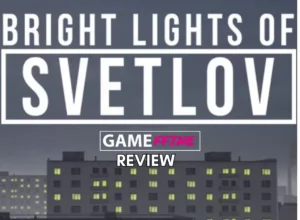I am a card game aficionado. To the extent that I like playing card games (both online and in real life, I once played 29 for 13 hours straight, TRUE STORY), but I don’t like the meta aspect of it. I can build a deck, understand the basic strategies that guide a play in the game, but I can’t remember why a card is OP or useless in a deck. I can build a deck that I like and compliments my playstyle (damage driven), but I can’t keep updating that deck when new cards come out. And finally, I like the pacing of a card game, where I can sit back and think about my next move in PvE, while I hate being rushed into wrong moves which turn the game on its head in PvP. In that order, Deck of Ashes checks all the boxes. It has a campaign mode, it has a set amount of cards, and it’s still new so there is no deep meta to look into before I dive in. But does this hold up to the giants of the genre like Slay The Spire, or Gwent, or even the more recent and innovative Signs Of The Sojourner? Let’s find out.
Story & Narrative
Deck Of Ashes does turn a lot of tropes on its head. I will give them that. You don’t start as a weary traveler looking for a game in an inn. And you aren’t a valiant hero, on a noble quest to save humanity. Instead, you play as one of four outlaws, who were instrumental in bringing upon a curse (The Ash Curse) on the land which has mutated and perverted everything it has touched. You have hence been given the responsibility of undoing the curse by a mysterious Ash Master, and set out on a journey full of card battles.
Divided into acts, the game has multiple comic panels like cutscenes, which have been voice acted. Considering there are 4 playable characters (and one is locked at the start of the game), with each having different panels, lines, and story beat, that’s a lot of effort for a small game. I am not complaining though, I would rather the story is told to me through dialogues and panels, than long paragraphs of scrolling text with the font set to 8.
Gameplay & Mechanics
Each act, that the game puts you through is basically a randomly generated map, with dungeons, portals, battles, and events, with your home base at the center of it all. Most of it is self-explanatory, but there are a few deviations than the standard model, which I would like to discuss.
Deviations That I Like
Each region is controlled by a Ruler (Boss), who is out looking for you as soon as you enter a region. You have a specific amount of time to explore the region, improve your deck, collect resources, upgrade your cards and stats before the clock runs out and you have to face the ruler at the end of it.
To help you beat the ruler, the Ash Master has some companions that can help you out. The Blacksmith, can help you in upgrading and crafting new cards. The Herbalist can help you to improve your stats (like health or speed). The merchant can sell new card recipes for you to craft and use. The Ash master himself can replenish your used cards for a cost and so on. All of these abilities can be upgraded by collecting different resources from the different places you will be visiting, hence encouraging exploration.
You also set an interim camp every time you come out of the battle and are given a certain amount of Rest points, which you can use to either heal up from the skirmish and craft new/used cards in preparation for the upcoming battles.
But why do you need to recraft the cards from your existing deck, if the battle is already over? Good Question. Let me explain
Deviations That I Don’t Like
A battle in Deck Of Ashes plays like a duel in any other card game. Both you and your opponents play cards with different effects/abilities and try to reduce the opponent’s health to 0. The kicker though is the fact that once you have played a card during a battle, it ends up in your ash pile, which means that not only is the card unusable for the current battle, it’s also unusable for any future battles too.
Yup, you actually burn your cards in Deck Of Ashes. Its called the Ash pile for a reason, you all.
There are a few ways to get those cards back. But none of them are easier/better than the others. You can head back to base camp and ask the Ash Master to renew your deck, but that means wasting valuable time. You could also spend Rest points after every battle to get back your burned cards, but that would mean you are missing out on crafting new cards or replenishing health. Finally, you could also play the Ash Strain card, that becomes available to you when your deck runs lo, which restores some random cards from your ash pile, but that costs Health (anything from 5 to 50 HP), which can be quite crushing in later battles.
What this does, is that it encourages avoiding battles altogether, and secondly it discourages playing too many cards during battles. Every time you play a card, you are second-guessing yourself on whether you are ready to sacrifice a Rest Point or Health later on. This is especially true for Passive Cards, and instead of trying out combos, you are looking to end the battle in the lowest number of cards possible.
I am not sure if that was the intended effect of that mechanical choice, but it does need some fine-tuning. It does add an interesting decision making on top of the game, and I understand that it’s the pivotal mechanic of the game. But right now it’s just too punishing. Hopefully, that gets fixed in later updates.
Other things that I would like to see fixed in the next few updates are card balancing. The player’s card deck is woefully underpowered and crafting strong cards becomes exponentially expensive by the 3rd act while the enemy’s base damage sky rockets. I knew I said I don’t know enough about card meta and I don’t care, but I know that something is wrong when my character suddenly starts dying every random encounter when he was basically Superman only an act ago. I was able to try 2 different character decks during my playthroughs, and while both of them played very differently, the sudden difficulty spike was apparent in both.
Graphics Performance & Sound
Fortunately, multiple difficulty options tend to soften the blow and offer various options for the player to fine-tune his experience. There is also a Badland mode in the game, which is basically a Challenge Tower mode, where you just move from battle to battle, culminating into a boss battle. This mode lets you pick a deck and then tweak it along the way, which I thought was way fairer than the campaign.
Visually, the game looks a couple of years behind (ok maybe 5 years). I can’t quite put my finger on it as to what makes me feel that way. The enemy visual design is horrific and nightmare-inducing, the cards themselves are also well designed. And yet it doesn’t look nearly as good as a card game in 2020 should look. The various painting like load screens and backgrounds don’t help either. There is also the issue of accessibility. The tutorial isn’t the best and it’s not super clear what the UI does immediately. The same applies to the cards and the different characteristics they had. It took me around 30 minutes of fiddling around before I was sure exactly what to do, and how to do it.
Like all my other PC games, I played this on my MAC book Pro, and I didn’t see any issues when it came to frame drops, or loading times, so that’s a plus. The voice acting is not great, but impressive just by the presence of it, and the soundtrack is Okaish. Nothing that will keep you on the Menu screen, but nothing that seems out of place, and will have you reaching for the mute toggle.
VERDICT
There is a lot of work that needs to be done before Deck Of Ashes is a proper competitor in the card game landscape. But at least the framework is there. It has a nice storyboard, a neat mix of RPG elements, and a good range of characters/decks. The central mechanic of the Ash Pile still needs some work though, but it’s still workable for people who are looking for their next card battle campaign after Slay The Spire and Gwent Thronebreaker.









